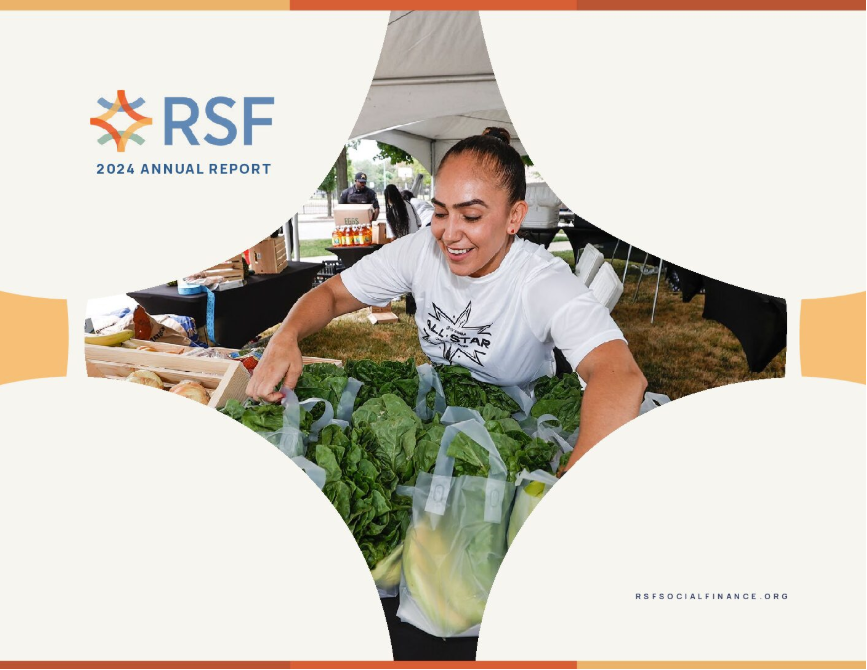A few weeks ago, RSF brought together a group of local area borrowers and investors to hold a first in-person discussion on the subject of pricing: the interest rate we charge our borrowers, and the interest rate we pay to our investors. The group included a handful of individual and institutional investors in the RSF Social Investment Fund, and a similar number of borrowers whose loans come from that same fund.
The meeting was inspired by a monthly staff reading group on Rudolf Steiner’s Economics, a collection of lectures he gave on the subject in 1923. Some questions came up regarding how we can determine a fair or true price when something of value is exchanged; how to tell whether the price for a good or service is adequate, insufficient, or excessive relative to the value that it actually provides and the costs incurred in producing it. Several staff spoke about how transparency is a critical factor in ensuring a sound price. The less we know about how the good or service was produced or how the money we pay will be used, the more difficult it becomes to say whether a certain price makes sense or not.
In Economics, Steiner suggests that a “true price” is based on meeting the whole needs of those producing a good or service such that they are able to produce that same good or service again. So if price should be based on meeting needs, how can we tell what needs exist when we buy or sell, invest or lend, give or receive? As an intermediary facilitating the flow of capital from investors to borrowers, and from donors to grantees, RSF faces a particular challenge in bringing to light the needs of all parties involved in an exchange. We wondered what would happen if our borrowers and investors could speak to each other about their needs and goals. How would everyone’s perceptions of a fair or acceptable interest rate be affected by direct dialogue?
About a month later, we gathered around the table to begin a conversation about how RSF currently establishes its interest rate pricing, and how that model might be changed to more effectively meet the needs of our investors and borrowers, as well as the needs of RSF itself.
The discussion largely centered around better understanding our existing model, and on sharing thoughts about what it would mean to bring clients into a more direct participation in pricing. As we offered some background on how RSF sets its interest rates for borrowers and investors, it was interesting to see people beginning to think through how the two rates are tied to each other, and the challenges and opportunities that this pricing relationship creates for RSF. One such challenge is timing – our loans last anywhere from a year to five years or more, while our investors are only obligated to leave their funds with us for 90-day periods. People wondered how RSF manages this discrepancy in commitments, and were noticeably surprised to hear that it hasn’t been an issue because our average investor is with us for nearly seven years.
Another fascinating aspect of the discussion focused on the potential downsides of more direct client involvement in pricing. Both investors and borrowers talked about trusting RSF, as the intermediary, to set the best price for all parties involved, and about the benefits of keeping the pricing model simple and efficient. A couple investors also spoke on behalf of the borrower’s position, voicing the concern that a more direct relationship between the two sides might cause investors to take an overzealous interest in how a borrower’s business or organization is run.
Perhaps the most compelling outcome of the meeting was the general recognition that face-to-face dialogue fosters important understanding of the connections and relationships behind financial transactions. Beyond a feel-good moment of being part of a larger community, one investor commented that such a conversation helps build greater consciousness of how money actually works and what impact it has in the world. One of the borrowers in the room added that an open and transparent process is needed to create a sense of ownership and partnership among stakeholders. When we reiterated that the goal of the meeting was to address the how of finance rather than simply the what, another investor echoed the sentiment and said that was precisely what the current economic times require.
We do not yet know where this first meeting will lead us, but there is no doubt that we want to continue creating similar opportunities for direct dialogue between members of our community. In that spirit, I invite you to join in conversation with our online community by leaving us a comment and sharing your impressions, ideas and questions. By doing so, we will begin to see each other’s needs and goals more clearly, and in turn be able to better understand the impact that our money and financial system have on ourselves, our communities, and our planet.
Gary Sprague is Communications Manager at RSF Social Finance


